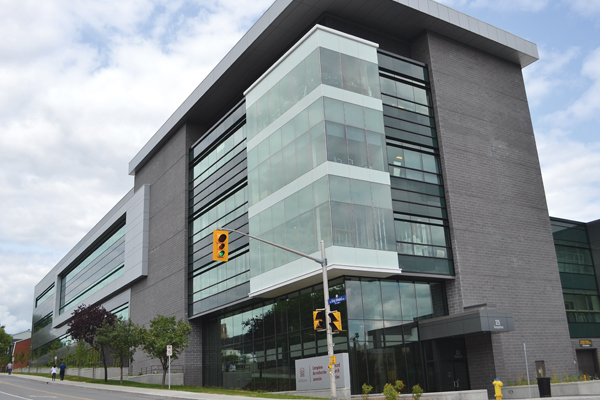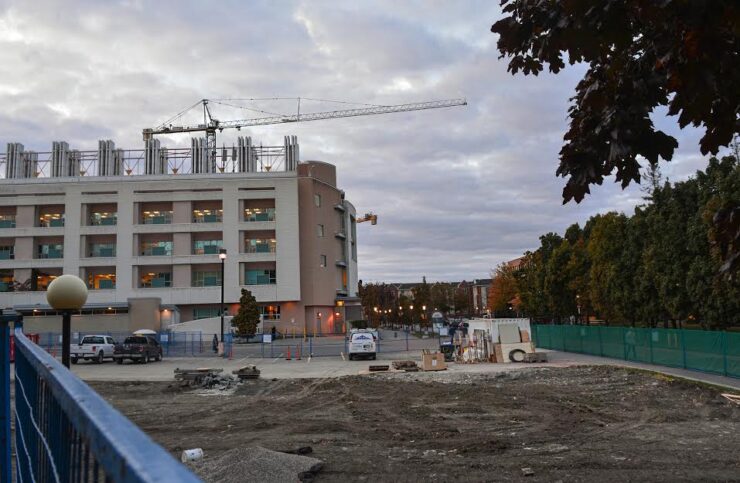New complex makes ‘significant strides’ toward Allan Rock’s research goal
Photos by Marta Kierkus and Nadia Drissi El-Bouzaidi
The University of Ottawa officially opened the Advanced Research Complex (ARC), the amalgamation of years of work from various faculties. The Fulcrum got up close and personal on a tour of the state-of-the-art technology.
The university unveiled the new $70-million facilities Sept. 30. The sense of pride amongst the crowd was palpable, said physics professor Paul Corkum.
U of O president Allan Rock said at the opening ceremony that with the new complex, “we’re making significant strides toward fulfilling our goal of becoming one of the top five research universities in Canada by 2020.”
Normand St-Jean, chief technologist of the lab, gave a tour of the André E. Lalonde Accelerator Mass Spectrometry (AMS) Laboratory, explaining the processes of the $5-million mass spectrometer.
In the first part of the mass spectrometer, the researchers load a sample of a particular compound. On this morning, St-Jean was about to test plutonium. The sample reaches the tank where it’s accelerated to “almost the speed of light,” he explains. The molecules pass through more machinery before the researchers can determine the exact composition of the compound.
The mass spectrometer, which spans most of the surface area of the lab, is capable of extremely precise measurements.
The ARC has vastly expanded the research capabilities of several different faculties at the U of O.
“We’re looking at a number of detailed projects,” said Ian Clark, a professor from the Department of Earth Sciences, who named carbon dating and “exotic radio isotopes” testing as examples of future projects.
Read more: They’re building an ARC
Read more: U of O obtains $5M accelerated mass spectrometer
The lab is named after André E. Lalonde, a former professor and dean of the Faculty of Science who was a driving force behind the project. Lalonde passed away in 2012 due to cancer. His picture hangs in the foyer of the ARC.
The ARC was set in motion in 2009 when Clarke and Corkum submitted separate proposals for research funding from the Canadian Foundation for Innovation. Both applications were accepted and the funds went to building the ARC.
Corkum is an expert in photonics, the study of the technical application of light. Since the university was looking into investing in photonics, he said he“began suggesting to people that we should bring all of photonics together.” Which would ensure the university’s investment would have the maximum impact.
In 2010, the university began drawing up plans for the ARC as they searched for a suitable location among limited university properties. Because of the research that would be conducted, the ARC had very stringent technical requirements, according to Claudio Brun del Re, the university’s director of physical resources.
“Achieving the vibration control was of extreme importance,” said Brun del Re, which was how the university settled for the current site on King Edward Avenue. The university conducted onsite testing of the stability of the location, and with positive results they moved on with the $70-million project.
Not all of the space in the photonics and geoscience lab has been put to use yet, which spans five storeys and 14,000-square-metres. The extra space is an advantage, Brun del Re said, since it could be used as leverage for future applications for government funds.
“Once we build something, that resource is lost,” said Brun del Re, so the university purposefully built extra space to ensure the facility could reach its “full potential.”





